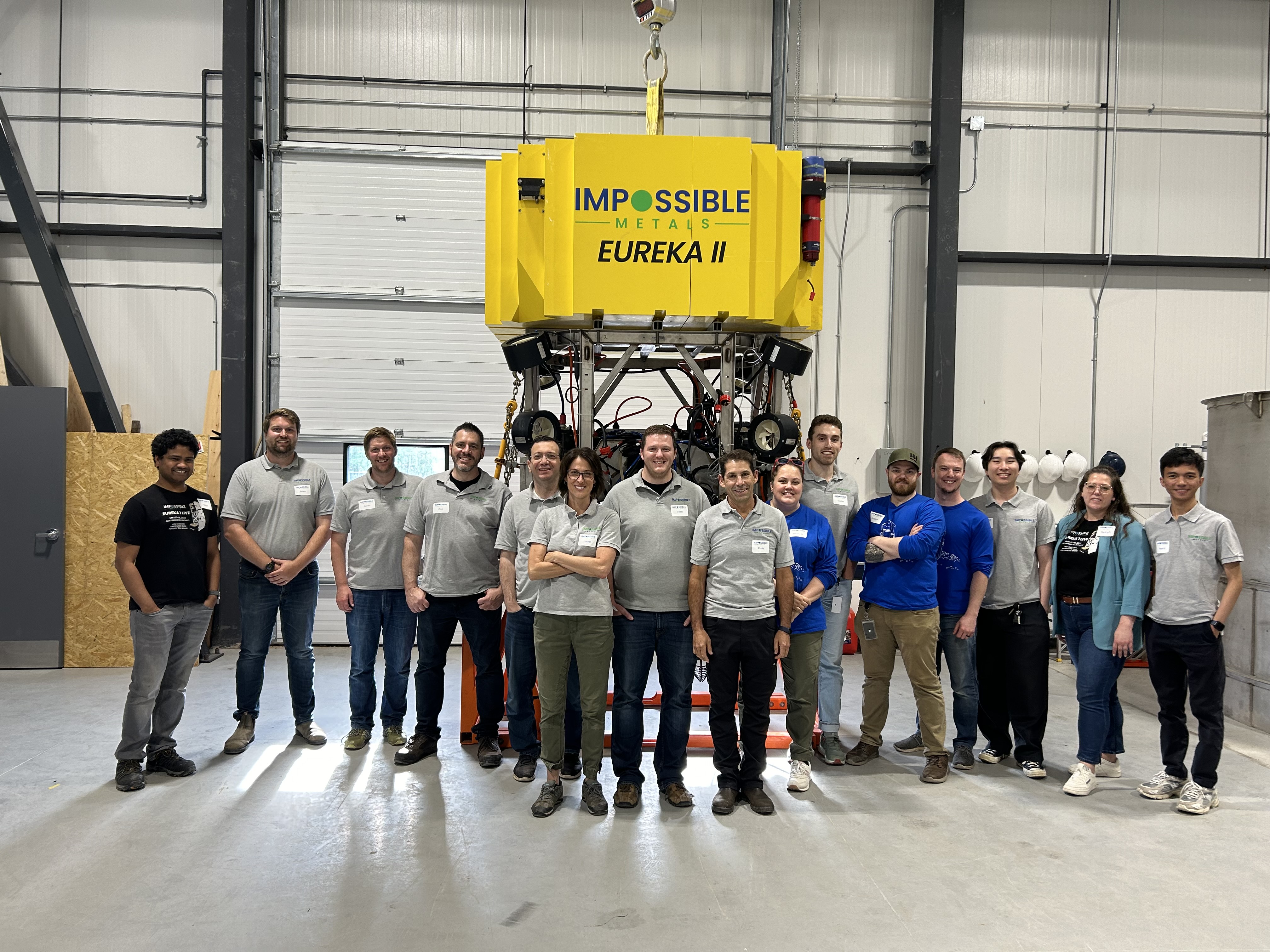A Q&A with Oliver of Impossible Metals
Critical mineral supply is a core constraint for global electrification. The majority of high-grade, easy to reach minerals have been extracted, while remaining deposits are stuck in low grade ores that require more time, energy, and selectivity. Additionally, demand for these materials is increasing dramatically as industries such as steelmaking, automotive, grid infrastructure and construction look to electrify aspects of their products and value chain.
Impossible Metals recognizes that shrinking supplies of critical minerals on land won’t get us there. In response, they have developed a deep sea robotics platform that moves across the sea floor picking up ores lying above the surface, all without disturbing ocean ecosystems.
Their recent Eureka II field test was a critical milestone in de-risking their technology, which unlocks an entirely new supply pathway for essential minerals in the decarbonization movement. We sat down with founder and CEO, Oliver Gunasekara, to learn more about the deep sea mining industry, why achieving their recent tech milestone was so important, and what efforts Impossible Metals is taking to ensure native marine ecosystems remain protected and preserved.
Why is deep sea mining such an important part of the global decarbonization story?
Deep sea mining will play a crucial role in the global decarbonization narrative for several compelling reasons.
Transitioning to renewable energy and reducing greenhouse gasses requires massive amounts of critical metals—nickel, cobalt, copper, and manganese—to produce batteries and other clean energy technologies. Not surprisingly, the demand for these metals has skyrocketed. Projections are that this demand will increase by 500% by 2050.
71% of the Earth’s surface is covered by oceans, and they contain the world’s largest reserve of these minerals in polymetallic nodules, which contain multiple minerals in a single form. Deep sea mining has the lowest metal extraction cost due to higher ore grades than terrestrial mining. It helps eliminate the need for new infrastructure and reuses existing ships and ports.
Not only will traditional land-based mining need almost 400 new mines to meet the surging demand alone, but it takes an average of approximately 18 years for a mine to go from deposit discovery to start-up. Additionally, land-based mining faces many environmental, social, and governance (ESG) impacts, including child labor, displacement or harm to local communities, deforestation, biodiversity loss, high CO2 emissions, and toxic waste tailings.
Finally, deep-sea mining reduces the risk of supply disruptions caused by geopolitical tensions, resource nationalism, or environmental regulations affecting land-based mines.
Can you tell us about your recent Eureka II deep sea test? Why is it such an important milestone?
We’re really excited about our recent Eureka II AUV (Autonomous Underwater Vehicle) deep sea test. Eureka II performed fully autonomous deep-water operations at a depth of one mile in the deep sea off Florida, marking the first-ever deep-water dive by an autonomous vehicle designed specifically for deep-sea mineral harvesting.
This style of deep-sea technology surpasses the limitations of traditional architecture, such as dredging tractor and riser pump technology, which were developed decades ago. The Eureka architecture leverages robotics, computer vision, and AI advances to enable an environmentally responsible and highly economical approach.
We plan to test Eureka III, our production-sized system, next year.
How do you ensure that the Eureka systems are not disrupting marine ecosystems?
It’s really important to us that our deep-sea mineral harvesting system doesn’t disrupt marine ecosystems.
Minimizing sediment disturbance is critical, and we achieve that in two ways:
1) Patented buoyancy engine technology ensures that the AUV hovers above the sea floor, not touching down.
2) The manipulator technology harvests nodules individually versus vacuuming up multiple nodules at once.
Finally, our selective harvesting capability uses optics and AI to detect and leave nodules containing detected life intact on the seafloor.
